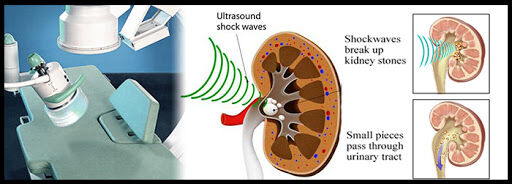Ultrasound-guided ESWL effectively treats renal and ureteral stones in children

Ultrasound-guided extracorporeal shock-wave lithotripsy (ESWL) represents a safe and effective method for the management of both renal and urethral stones in children suggest a study published in the Journal of Pediatric Urology on October 19, 2020.
Extracorporeal shock wave lithotripsy (ESWL) was introduced by Chaussy et al. in the 1980s, and the 1st report of successful ESWL in children was published in 1986. Thereafter, several reports showed the safety as well as the stone-free rates of ESWL, which were comparable with those of adults. Repeated SWl sessions carry limitations due to the use of general anesthesia and X-ray radiation. Although ESWL is widely accepted throughout the world as a first-line treatment modality, and although various studies have been conducted on it, its role in the management of pediatric and adolescent patients has not been fully established. So, the researchers conducted a retrospective cohort study including 124 consecutive pediatric patients with 133 renal and ureteral stones less than 2 cm whom SWL was performed in the period between January 2008 and December 2019. They conducted the study to evaluate stone-free rate )SFR) of 1-session of SWL for the management of pediatric renal and ureteral stones less than 2 cm performed exclusively under ultrasound guidance and identify factors influencing its success. SWL procedures were performed by one expert surgeon in a single, national reference centre, exclusively under ultrasound guidance using Modulith SLK lithotripter. Follow up was scheduled in post-SWL 2nd, 4th, 12th weeks and 6 months. Stone-free status was determined by absent visible stone fragments on kidney, ureter, and bladder (KUB) x-ray and ultrasound.
The mean age of the children was 10 years (SD=6.0) and the mean stone size was 10.4mm (SD=3.6 mm). The researchers performed a sedation type of anaesthesia in 80 patients following SWL. They found Stone-free rate) SFR) at 12 weeks among the 124 patients (mean age 10 years) was 88% with 1 session of treatment. They determined Early stone clearance is associated with younger age, sedation anaesthesia and radiolucent stones.
The authors concluded, “ Ultrasound-guided SWL represents a safe and effective method for the management of both renal and urethral stones in children. The SFR following 1-session of SWL at 12 weeks was achieved in 88.0%, the overall success rate after all SWL sessions reaching 91.7 %. A higher success rate was observed in children harbouring radiolucent stones.
The commentators added, “ Although advancements in endoscopic instrumentation and laser technology will continue to expand the indications for ureteroscopy, it is clear that shock-wave lithotripsy will remain a cornerstone of the surgical management of pediatric patients with urinary stones. Comparative effectiveness studies that consider patient-centered outcomes are needed.